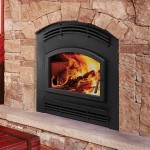Living Room Layout with Corner Fireplace and TV: Maximizing Space and Style
Integrating a corner fireplace and a television into a living room design presents a unique set of challenges. The placement of these two focal points can significantly impact the flow, functionality, and aesthetic appeal of the space. A successful layout requires careful consideration of viewing angles, furniture arrangement, and overall room proportions.
The corner fireplace, while offering a cozy ambiance, often dictates the initial design direction. Its fixed location limits flexibility in furniture arrangement. Similarly, the television, an essential component of modern living, requires strategic placement to minimize glare, optimize viewing distance, and integrate seamlessly with the room's décor. This article explores various approaches to designing a living room layout incorporating both a corner fireplace and a television, focusing on optimizing space, functionality, and style.
Understanding the Constraints and Opportunities
The corner fireplace introduces several constraints that designers must address. First, the angled structure inherently reduces usable wall space. This limitation necessitates creative furniture placement to avoid overcrowding or awkward gaps. Second, the fireplace often becomes the dominant visual element, potentially overshadowing the television. Balancing the visual weight of these two focal points is crucial for a harmonious design.
However, a corner fireplace also presents opportunities. Its unique placement can create a sense of depth and character, adding visual interest to the room. It can also serve as a natural anchor point around which the furniture arrangement revolves, fostering a sense of intimacy and cohesion. The key is to recognize both the limitations and the opportunities that the corner fireplace presents and to develop a design that maximizes its potential.
Furthermore, the size and style of both the fireplace and the television play a significant role in determining the optimal layout. A large, imposing fireplace may require a more minimalist furniture arrangement to avoid overwhelming the space. Conversely, a smaller, more understated fireplace may benefit from bolder design choices to create a focal point. Similarly, the size of the television should be proportionate to the room's dimensions and the viewing distance to ensure a comfortable and immersive viewing experience.
Consider the architectural style of the room. A modern, minimalist setting might call for a sleek, wall-mounted television and a contemporary fireplace design. A more traditional space might benefit from a more substantial fireplace mantel and a television discreetly integrated into a custom-built cabinet. The goal is to create a cohesive design that reflects the overall aesthetic of the home.
Exploring Layout Options: Symmetric vs. Asymmetric Designs
Two fundamental approaches to living room layout with a corner fireplace and TV are symmetric and asymmetric designs. A symmetric layout emphasizes balance and formality, while an asymmetric layout embraces visual interest and a more relaxed feel. The choice between these two approaches depends on personal preferences, the room's dimensions, and the desired overall aesthetic.
In a symmetric layout, the furniture is arranged in a balanced manner around the fireplace and television. For instance, two matching sofas could be placed facing each other, with the fireplace on one side and the television on the other. This arrangement creates a sense of order and harmony, but it can also feel somewhat rigid and predictable. The key to a successful symmetric layout is to incorporate subtle variations in texture, color, and accessories to prevent the design from becoming monotonous.
An asymmetric layout, on the other hand, embraces intentional imbalance. For example, a large sectional sofa could be placed on one side of the fireplace, with a smaller loveseat or armchair on the other. The television could be positioned slightly off-center, creating a more dynamic and visually engaging composition. Asymmetric layouts often feel more modern and relaxed, but they require careful planning to avoid appearing haphazard or disorienting.
Regardless of whether a symmetric or asymmetric approach is chosen, it's essential to consider the viewing angles from all seating positions. Ensure that everyone in the room has a clear and unobstructed view of both the fireplace and the television. This may require adjusting the furniture placement or using swivel chairs to allow for flexible viewing options.
Another important consideration is the distance between the seating area and the television. A general rule of thumb is to multiply the screen size (measured diagonally) by 1.5 to 2.5 to determine the optimal viewing distance. This ensures a comfortable and immersive viewing experience without straining the eyes. For example, a 55-inch television would ideally be viewed from a distance of approximately 7 to 11 feet.
Symmetry can be achieved even with an asymmetrically placed TV by using strategically placed accessories. For example, if the television is positioned to the right of the fireplace, a tall plant or floor lamp on the left can create visual balance.
Practical Considerations: Storage, Lighting, and Traffic Flow
Beyond furniture arrangement, several practical considerations contribute to the success of a living room layout with a corner fireplace and TV. Storage solutions, lighting design, and traffic flow all play a crucial role in creating a functional and comfortable space.
Adequate storage is essential for maintaining a clutter-free living room. Built-in cabinets surrounding the fireplace can provide ample storage for media equipment, books, and other household items. Alternatively, freestanding shelves or cabinets can be used to create a more flexible storage solution. Consider incorporating storage ottomans or coffee tables with hidden compartments to maximize space and keep clutter at bay.
Lighting design is another critical aspect of living room layout. A well-lit room feels more inviting and comfortable. Layered lighting, including ambient, task, and accent lighting, can create a warm and inviting atmosphere. Ambient lighting, such as overhead fixtures or recessed lighting, provides general illumination. Task lighting, such as table lamps or floor lamps, provides focused light for reading or other activities. Accent lighting, such as spotlights or wall sconces, highlights architectural features or artwork.
When positioning the television, consider potential sources of glare. Avoid placing the television directly opposite a window or other bright light source. Use blinds or curtains to control the amount of natural light entering the room. Consider using an anti-glare screen protector to minimize reflections. Strategic placement of lamps can also help to minimize glare on the television screen.
Effective traffic flow is essential for creating a functional and comfortable living room. Ensure that there are clear pathways through the room, avoiding obstacles that could impede movement. Arrange furniture to create a natural flow from one area to another. Consider the location of doorways and windows when planning the layout to avoid blocking access or obstructing views.
The fireplace itself can impact traffic flow, especially if the hearth extends significantly into the room. Be mindful of ensuring enough space around the hearth for comfortable passage. A raised hearth can be a tripping hazard, so consider the placement and height carefully.
In small living rooms, multi-functional furniture becomes especially important. A sleeper sofa can provide additional sleeping space for guests. A coffee table with lift-top functionality can be used as a dining table or workstation. These types of furniture pieces can help to maximize space and functionality.
Choosing the right rug can also significantly impact the overall feel of the room. A large rug can help to define the seating area and create a sense of cohesion. A smaller rug can be used to add a pop of color or texture to the space. Consider the size, shape, and material of the rug when making your selection.
Finally, don't be afraid to experiment with different layouts and furniture arrangements. Use masking tape to map out the dimensions of furniture on the floor. This can help you visualize the space and identify potential problems before you commit to a particular layout. Take photographs of different layouts to compare and contrast them. Ultimately, the best living room layout is one that meets your specific needs and preferences.

How To Design Around A Corner Fireplace

How To Arrange Furniture With A Corner Fireplace Setting For Four Interiors

Google Chrome The Fast Secure Browser From Furniture Placement Living Room Corner Fireplace Layout

How To Arrange Furniture With A Corner Fireplace Setting For Four Interiors

Arranging Furniture With A Corner Fireplace Brooklyn Berry Designs

Top 15 Small Living Room With Fireplace And Tv Decorating Ideas Corner Furniture Layout Comfy Decor

How To Design Around A Corner Fireplace

How To Arrange Furniture With A Corner Fireplace Setting For Four Interiors

Q A With Christine Tse Interiors

Arranging Furniture With A Corner Fireplace Brooklyn Berry Designs
Related Posts








